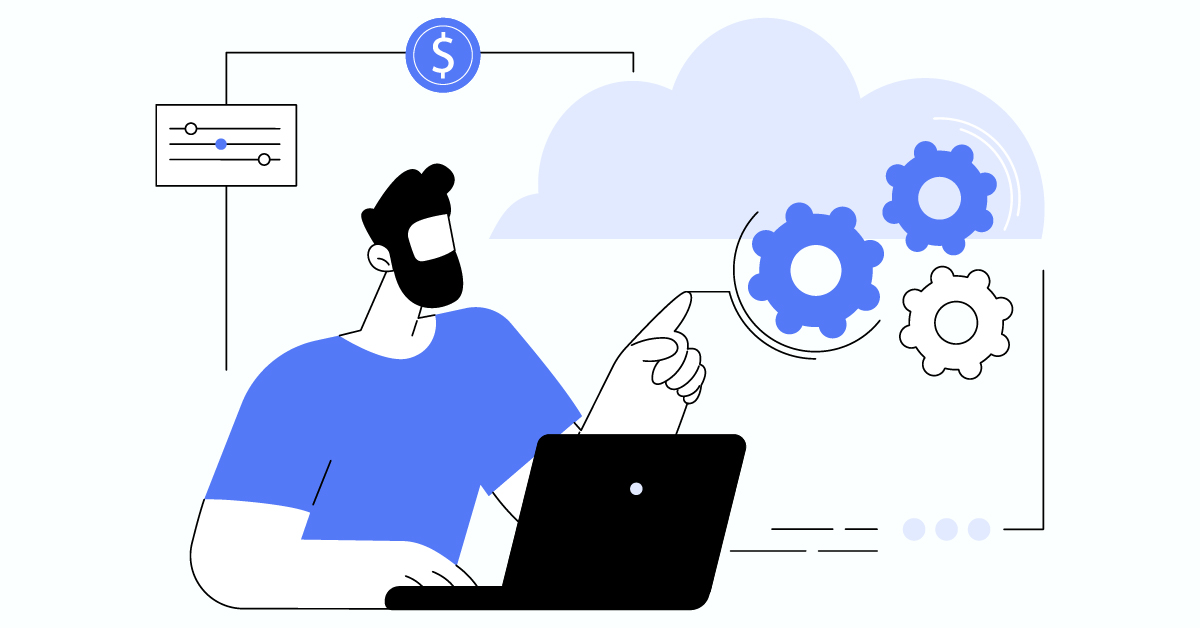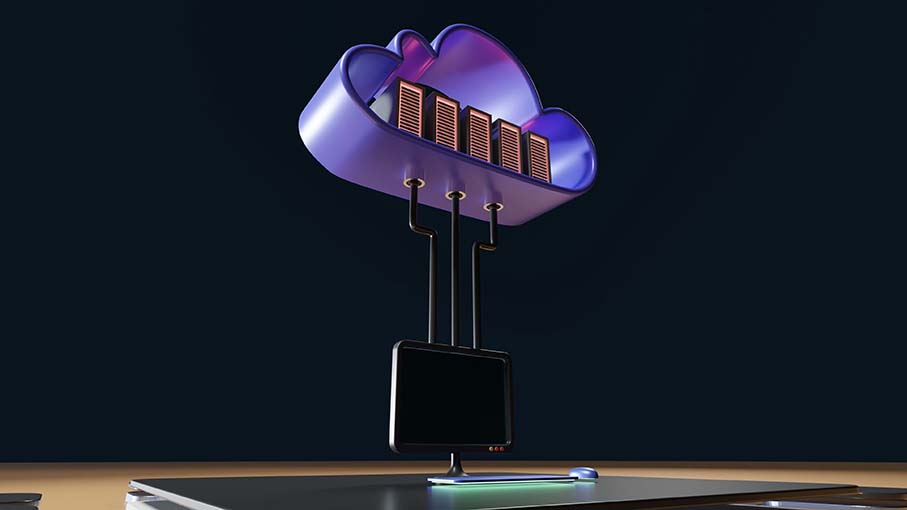
The Internet of Things (IoT) is a powerful investment that can differentiate your business, drive efficiencies, and generate new revenue streams. And, like any significant investment, IoT must demonstrate a clear and measurable return on investment (ROI). An effective strategy for maximising ROI is to reduce the cost of the IoT solution, as development costs, maintenance and support, and other expenses can significantly impact the overall investment.
In this series, we look at how to deliver maximum return on investment for your IoT solution. In part 1, we explored the benefits of industrial IoT, showed how effective planning can set you up for success, and what aspects you need to consider when doing so.
In part 2, we explore how to reduce the cost of your IoT solution and maximise ROI. We will look at the main factors driving cost, compare the cost of different strategies, and offer our recommendations for how to reduce costs.
The Cost of an IoT Solution
The cost of an IoT solution includes all costs associated with the product or service over its lifetime - this is referred to as the Total Cost of Ownership (TCO).
Typical costs associated with an IoT solution include development, integration, hosting, licenses, third-party services, maintenance, customer support, as well as overheads, training, and admin costs.
The TCO of any IoT solution depends on several factors, such as the complexity of the solution, the scale of the deployment, and the security and compliance measures required. The factor that will impact the cost of your IoT solution the most is whether you choose to buy it, build it, or use an IoT platform.
The Impact of IoT Strategies on Cost
There are three main strategies for bringing an IoT solution to market: Buy an "off-the-shelf" solution, build it from scratch, or build on an IoT platform. Each strategy comes with its pros and cons. We cover this topic in detail in our article on “Buy & Build”.
Buying an IoT Solution Off-The-Shelf
Buying an off-the-shelf IoT solution, aka the “Buy” model, provides fast time-to-market but may offer limited functionality and customisation. This is typically a low-cost option but offers less flexibility or extensibility. Scaling an off-the-shelf solution can also be problematic.
Off-the-shelf IoT solutions generally have the lowest TCO. Pricing generally follows SaaS pricing guidelines, consisting of a licence fee plus any usage-based add-ons. This information is often made publically available, making it easy to estimate the TCO.
Building IoT Solutions from Scratch
Building an IoT solution from scratch gives you complete ownership of the solution, creating solutions that meet your needs and integrate with your systems and business processes. However, this strategy requires a lot of internal expertise to deliver successfully, and there is a high risk of delays, ballooning costs, and unfortunately, project failure.
Calculating the TCO for an in-house solution can be challenging due to its complexity and the many variables involved. We’ll cover this in more detail below.
Building on an IoT Platform
Building on an IoT platform, such as the Davra Platform, provides the best of both worlds. Also known as “Buy and Build”, this strategy provides you with a custom application that scales with your business, is flexible and extensible, and integrates with your IT and OT systems.
A Buy and Build strategy will typically have a TCO less than “Build” and greater than “Buy”. The TCO can be calculated based on the terms of the contract with the platform provider. This will normally take the form of a base license fee + usage-based billing. For information about Davra’s pricing, get in touch via our Contact page.
The Cost of Developing an IoT Solution from Scratch

Ambitious organisations often look to build solutions from scratch, and it’s easy to see why. You get a custom solution, perfectly tailored to your business. You can connect any device, from any vendor, using any protocol, and integrate with all of your existing systems. However, you can also achieve all of this by building on an IoT platform, for less effort, cost, and risk.
In this section we’ll take a look at the various expenses associated with developing, maintaining, and supporting a custom IoT solution throughout its lifecycle. This will provide a view of the financial commitment required, as well as how to mitigate it.
The Time to Market
In business, it’s often said that timing trumps money. The time it takes to bring a product to market impacts cost, ability to generate revenue, and overall value to the business. Moreover, this time window provides competitors with an opportunity to overtake and capture market share.
The complexity of bringing an IoT solution to market at scale is often underestimated. Many businesses attempting to go it alone encounter unforeseen challenges and delays, leading to higher costs and extended timelines.
Gartner research shows the median development time for IoT solutions is 14.5 months, with the 10th percentile at 6.5 months and the 90th percentile at 24 months. Based on these numbers, development costs along can range from $50k to well over $500k.
IoT platforms, however, boast significantly shorter development times. At Davra, the average time to bring a solution to market is just 4 months. We can achieve this because we have spent years building up the tools and technologies within the platform to ensure repeatable, reliable success. We also have a team of experts who have seen and found solutions to most problems.
Hosting, Compute, & Storage
Choosing the right hosting environment for your IoT solution—whether AWS, Azure, Google Cloud Platform, or on-premise—is crucial for managing costs. Key factors include the amount of data generated, data rate, and read rate, all of which affect storage and processing expenses. High data volumes need more storage, while higher data rates require greater bandwidth.
Compute resources, particularly CPU and memory, are essential for data processing and analytics. Cloud platforms offer autoscaling to optimise costs as your IoT solution scales, while on-premise hosting involves significant upfront and maintenance costs but offers predictable long-term expenses.
Managing your own hosting can save costs but demands significant resources for system administration, monitoring, and security. These efforts require skilled personnel and robust infrastructure, potentially offsetting initial savings.
Using a managed platform like Davra simplifies these tasks by bundling hosting fees into the service bill, providing clear and predictable pricing.
PaaS Services and Components

An IoT solution requires various platform-as-a-service (PaaS) components to function correctly. An example stack might include:
- Infrastructure Management (e.g. Kubernetes, Docker)
- Data Storage and Management (e.g. MongoDB, Cassandra, Postgres)
- Monitoring and Logging (e.g. Prometheus, Grafana, Kibana, Fluent Bit, Elasticsearch)
- Build and Deployment (e.g. Jenkins, Git)
- Messaging and Coordination (e.g. ZooKeeper, Redis, Kafka)
- Specialised services (e.g. ESRI for geospatial data)
These PaaS components can be purchased as a managed service, and the cost of each service can vary based on usage, scaling requirements, and the complexity of integrations. Each service also requires setup, as well as ongoing maintenance and support from your team over the lifetime of the solution. This all contributes to the TCO.
In contrast, Davra bundles all of these services as part of the Davra Platform (this is not true for all platforms on the market). This means you get just a single bill every month, receive consistent SLAs, and don’t need to spend resources to maintain and support components that aren’t core to your business. Instead, you can focus your efforts on differentiating your solution.
Scaling and Expansion Costs
You want your IoT solution to be successful, and ideally to scale in such a way that the investment grows over time. With this in mind, there are several considerations when scaling and expanding your solution that will impact the TCO.
The first consideration is whether the current architecture can handle increased performance demands. As the number of connected devices grows, the system must be capable of managing higher volumes of data, more complex interactions, and increased user activity. If the architecture is not designed with scalability in mind, you may face significant costs in reengineering or upgrading your system.
Every addition to the IoT system, whether it's a new dashboard, module, or integration, incurs costs. These costs include not only the initial development but also ongoing maintenance and potential upgrades.
Similarly, creating new solutions or applications within the existing architecture should be straightforward. If the architecture is rigid or overly complex, developing new solutions can become cumbersome and expensive.
In contrast, our industrial IoT platform has the performance and scalability to grow with you. Adding new modules or integrations is straightforward, and you can add a new dashboard in seconds. You can also leverage the efficiencies of building on a centralised platform to quickly create new applications by reusing existing modules, integrations, and knowledge. This reduces the TCO for each subsequent solution, thereby increasing the ROI.
Join our Mailing List
Join thousands of professionals and get IoT tips to help you transform your business.
Other Factors that Impact the Cost of IoT
When estimating the total cost of ownership for your IoT solution, the previous sections cover the biggest line items. Below we’ll look at other considerations that can directly impact overheads, performance, quality, and reliability of the solution. These are worth factoring into any TCO calculation.
Vendor Management: Managing multiple third-party vendors and their contracts can be a complex and resource-intensive process. When building a solution from scratch, you need to manage each vendor providing packaged services, which can lead to fragmented and siloed solutions. Centralising solution delivery on a single platform can simplify this process significantly.
Vendor Reliability: If a vendor decides to sunset a service or goes out of business, this can disrupt your operations and require sudden, costly replacements. Additionally, using multiple vendors means managing various integration points, which can increase the chances of compatibility issues and operational inefficiencies.
Security & Compliance: Depending on your sector, you may need to comply with standards like ISO 27001 or SOC-2. These incur significant ongoing costs to maintain, and you must ensure that your vendors also comply with the necessary standards. Platforms like Davra simplify this by providing inherited compliance with certifications such as ISO 27001, SOC-2, and DOD IL5, reducing the burden on your organisation.
Service Availability & Reliability: Guaranteeing IoT solution availability and reliability is crucial. A proof of concept may not work when scaled to thousands of devices-this is a common pitfall of both custom and off-the-shelf solutions. IoT platforms provide standard SLAs to ensure consistent performance at any scale. For instance, Davra guarantees 99.9% availability, maintaining reliability from one device to one million.
Conclusions
Reducing the cost of your IoT solution means optimising your return on investment. The Total Cost of Ownership (TCO) includes various factors such as time to market, solution complexity, and the scale of deployment. However, the most impactful decision influencing TCO is your IoT strategy—whether you choose to buy an off-the-shelf solution, build it from scratch, or leverage an IoT platform.
For bespoke enterprise solutions, adopting a Buy and Build approach can significantly reduce the TCO over the solution's lifetime. This approach combines the advantages of purchasing ready-made components with the flexibility of custom development. You benefit from faster time-to-market, simplified development, maintenance, and support costs, and fewer overheads.
Centralising on an industrial IoT platform reduces the costs and ensures a more reliable, scalable, and compliant solution. For those looking to achieve long term success with their IoT initiative, we strongly encourage you to consider this strategy.








